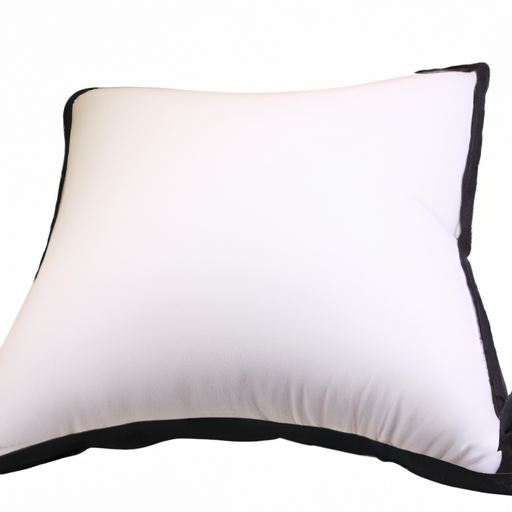Having good posture is important for overall health, yet so many of us struggle to maintain the correct posture in our everyday lives due to the sedentary nature of our jobs. A meditation pillow can be an effective tool for promoting better posture, and for relieving common postural aches and pains. In this article we’ll discuss how a meditation pillow can improve your posture, the different types available, how to position them correctly, and tips for using them correctly.
Benefits of Using a Meditation Pillow for Posture
A meditation pillow can be a great way to improve your posture. It helps to support the spine in a natural position and encourages good posture. Sitting on a pillow can be more comfortable than sitting directly on the floor or a chair, which means you’re less likely to slump over and maintain poor posture. It also helps to keep your back straight and your head up, which is important for maintaining optimal posture. And by allowing you to sit in a comfortable yet ergonomic position, it can reduce postural stress and strain.
Types of Meditation Pillow
If you’re thinking about using a meditation pillow for better posture, it’s important to understand the different types available. Meditation pillows come in a variety of sizes and shapes, including round and oblong, so you can choose the one that fits your body best. There are also pillows specifically designed for particular postures, such as kneeling or half-lotus. In addition, there are pillows filled with different materials such as buckwheat, millet, and memory foam that provide differing levels of support and comfort.
How to Position Your Meditation Pillow for Optimal Posture
Having the right posture is key when using a meditation pillow. Your spine should be completely aligned, with your head up and your chest open and relaxed. You should feel supported and comfortable but also challenged—it should be difficult enough that you can maintain the position for extended periods of time. Positioning the pillow correctly is essential for proper alignment, so make sure to experiment with different heights and densities until you find one that’s ideal.
Tips for Maintaining Good Posture with a Meditation Pillow
In order to get the most out of your meditation pillow, it’s important to use it correctly. Start by setting aside a few minutes each day to practice using your meditation pillow while in a seated position. Begin by positioning yourself on the pillow in the optimal posture and focusing on maintaining this position with good alignment. Take five deep breaths and practice connecting with your body as it adjusts to the new position. With practice, you’ll find that you can maintain good posture for longer periods of time and become more comfortable in this position.
How to Choose the Right Meditation Pillow for Your Posture
Choosing the right meditation pillow for your posture can be crucial for achieving the desired results. The size and shape of the pillow should be based on your physical size and shape, as well as the particular posture you’re aiming for. For example, a larger pillow may be better for those looking to sit in a cross-legged position. The material is another important consideration; some materials provide more support than others, while some are softer and more comfortable. Consider which material will best meet your needs.
Common Mistakes to Avoid When Using a Meditation Pillow for Posture
Using a mediation pillow incorrectly can lead to poor posture and postural aches and pains. It’s important to position the pillow correctly and ensure that your spine is properly aligned throughout your sitting practice. Additionally, make sure to use the correct size and shape of pillow for your body type and desired posture. Be sure not to lean too much on the sides of the pillow, which can cause your spine to curve unnaturally or lead to fatigue. Lastly, make sure to listen to your body and stop if you start feeling uncomfortable or strained.
What to Look for in a Quality Meditation Pillow
When looking for a good quality meditation pillow, it’s important to pay attention to what materials it’s made of. Look for pillows that are filled with natural fibers such as buckwheat or millet and pillows with 100% cotton covers or organic fabrics. Also consider how dense or firm the pillow is; too soft or too hard is not ideal, as you need something that offers adequate support but also comfort. Lastly, consider the shape and size of the pillow—choose one based on your body shape and desired posture.
The Pros and Cons of Using a Meditation Pillow for Posture
Using a meditation pillow for better posture has its pros and cons. On one hand, it can be a great way to promote better posture and help relieve common postural aches and pains. Additionally, it can help promote relaxation and provide more comfort while sitting compared to other surfaces such as chairs or the floor. On the other hand, using a meditation pillow incorrectly can actually lead to poor posture, which can result in back pain or other postural issues. Therefore, it’s important to choose the right type of pillow and use it correctly.
Conclusion
Using a meditation pillow can be an effective way to improve posture and relieve common postural aches and pains. It’s important to choose the right type of pillow based on your body size, shape, and desired posture. Additionally, make sure to position the pillow correctly and practice maintaining good posture throughout your sitting practice. With regular practice, you can enjoy improved posture and improved overall health.



